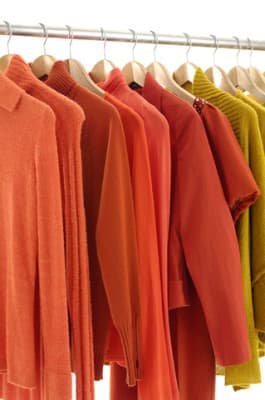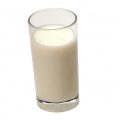 As you probably know, traditional dry cleaning involves toxic chemicals. Dry cleaners use tetrachloroethylene (commonly known as “perc”), which is classified as a probable human carcinogen, with exposure conferring an increased risk of cervical and esophageal cancers, lymphoma, vision problems, and Parkinson’s disease. Perc enters the bloodstream via respiration or through skin absorption, and it ends up in the air and water, so we are all exposed to some amount of this stuff.
As you probably know, traditional dry cleaning involves toxic chemicals. Dry cleaners use tetrachloroethylene (commonly known as “perc”), which is classified as a probable human carcinogen, with exposure conferring an increased risk of cervical and esophageal cancers, lymphoma, vision problems, and Parkinson’s disease. Perc enters the bloodstream via respiration or through skin absorption, and it ends up in the air and water, so we are all exposed to some amount of this stuff.
How can we minimize our exposure to perc?
Most dry cleaners continue to use perc (yes, it is still legal, although it is being phased out in some states), but you’ve no doubt noticed “organic” dry cleaning establishments popping up all over your neighborhood. “Organic” brings to mind things that are wholesome and healthful, so this must be good, right? Well…it depends.
Where food is concerned, the term “organic” refers to a method of growing that eschews the use of chemical pesticides, herbicides, and fertilizers that may be harmful to humans and to the environment–yay! In most other contexts, however, “organic” simply refers to any “compounds containing carbon.”
Well, most things on earth fall into that category, including–you guessed it–perc! So technically, because the industry is largely unencumbered by pesky government regulations, any dry cleaner can put a big ORGANIC sign in their window.
So what’s a concerned lady with dirty cashmere sweaters to do?
The good news is that an increasing number of establishments who advertise themselves as organic cleaners are indeed moving away from perc, perhaps because the people most likely to suffer health problems from perc are those with chronic exposure (I cringe when I see pregnant women behind the counter of my local cleaners).
Some perc alternatives are safe, while others are just good examples of greenwashing. And just to confuse the issue, they are all organic.
Gimme the Good Stuff exists to separate the good stuff from the bad and sneaky stuff, so here we go:
The Bad Stuff
When it comes to drycleaning, perc is bad stuff, obvi. I hope I’ve sufficiently scared you out of continuing to bring your clothes to old-school dry cleaning places.
The Sneaky Stuff
- DF-2000. Some “organic” dry cleaners actually don’t use perc these days. This sounds great, but you’ll need to ask if they are using a petroleum-based solvent called DF-2000 in its place. Produced by Exxon-Mobile, DF-2000 is classified as a neurotoxin by the EPA, and while I do believe it is less concerning than perc, it is not, by any stretch of the imagination, non-toxic.
- GreenEarth Cleaning. Your “organic” cleaner may use the GreenEarth Cleaning method, which relies on D-5 silicone (technically known as decamethylcyclopentasiloxane–spell check just threw up) to clean garmets. This option sounded good to me at first since I’ve done a lot of research on silicone and it seems to be harmless, but the truth is that D-5’s potential toxicity is largely unknown (some animal studies suggest that it may be carcinogenic in large doses.) Overall, GreenEarth Cleaning is certainly better than old-school perc dry cleaning, but the safety of D-5 is still questionable.
The Good Stuff
There are only two methods that I feel comfortable classifying as “good” at this point:
- Liquid CO2 method. This process involves the conversion of carbon dioxide to its liquid form (then back into a gas) and is entirely chemical-free. The equipment required for this method is extremely pricey (as high as six figures), so your town may not have a cleaner who offers this. Note: If your cleaner uses the Solvair process to do its CO2 cleaning, it uses Dipropylene Glycol n-Butyl Ether (or DPnB) as one component in its cleaning fluid. While not natural, DPnB does not confer the health concerns associated with the ethylene glycols, with which it is often confused. Many bloggers (including yours truly), and even the Sierra Club, have incorrectly identified the solvent used by Solvair as highly toxic propylene glycol.
- Professional wet cleaning. It turns out that most “dry clean only” items can safely be cleaned with water and detergent, provided this is done by special computerized machines found at select dry cleaning establishments.
Bottom line–here’s how to safely have your clothes dry cleaned:
Ignore the “organic” sign. It’s meaningless. Instead, ask your dry cleaner if they offer wet cleaning, and if they do not, find an establishment that provides the liquid CO2 method.
Oh, and if you live above or next to a dry cleaners, it’s probably worth having the air in your home tested to be sure you aren’t being exposed to high (or even low) levels of perc on a daily basis.
Stay sane,
If you liked this post, sign up for our newsletter to be alerted when we publish new content like this!










Jen says
Do you know what K4 is and if that is actually safe to use?
Maia James says
No, I’m sorry, I don’t know what k4 is.
Kim says
I’ve been a dry cleaner for 35 years. I have used perc all those years. Perc cleans better than all of those other solvents and is the safest for the cleaner. When Perc is breathed in it is also blown out, not so with the others, meaning they stay in your lungs. I had a beauty shop call the fire dept about a smell, well come to find out it was the beauty shop smelling and not the cleaners. Many people have opinions, I suggest contacting your local cleaner. If it smells in the store leave. By the way after 35 years In dry cleaning I have suffered no I’ll effects. I also know many old cleaners. Also fyi it’s perchlorethelne.
Fuzzy Lugnutz says
Thanks for addressing the fact that “perc” is perchloroethylene! Too many people are ill-advised & unaware of chemical compounds & too many of these sorts get freaked out if a word has too many letters in it. While I wouldn’t suggest swimming in a vat of perc nor using it as a facial scrub, a lot of the hype it’s drummed up is within the newer generations that seemingly slept through chemistry class & never took an organic chemistry course (your own bodies produce some crazy stuff, folks!). While we’d all like to use kinder, gentler compounds for both the Earth’s sake & that of ourselves, not everything out there that looks/sounds scary is CHEMICAL DEATH!!! I can only imagine the dingbats who see such words as Ascorbyl palmitate or Carboxymethylcellulose in their foods’ ingredients & go looking for the nearest emergency room or start chugging ipecac syrup.
May you & other dry cleaners continue to live long lives, Kim.
Jolanda says
Are any of these safe for cleaning a silk wedding dress?
Maia James says
You would have to ask them about your specific dress, but my guess is that yes, they would be.
Hugo Cerqueira says
Dear Maia,
I just found this article sent to me by a friend of mine, I know it’s almost 4 years now but I really wanted to chime in to congratulate you for this article. I am a professional of the cleaning industry, and I came across hundreds of articles (sometimes written by so-called experts) that were majority of the times full of inconsistencies and lack of correct technical information. Your article is very summarized and very precise, congratulations, one would imagine that who wrote this article really knows about it.
I am specialized in converting solvent drycleaners in solvent free cleaners, if you want to update this article, I would be more than pleased in provide you some information and even show you the backstage of this conversion project.
Keep up the good work,
Hugo
Sylvie Gosselin says
Hi Maia,
I would love to hear more about this!
It’s facinating!
Thank You
Sylvie
Tommy says
I took a shirt to a place called Joe’s Organic Cleaners. It’s 70% cashmere and 30% silk. Only once, unless I’m wrong. And then I put it in a mesh bag and put wool and cashmere shampoo in the washing machine with it. Would it still be all right if I wore it?
Zoé says
Tommy – Agitating knits in washing machines will cause them to shrink. (If you only did it once you may have been lucky).
You can wash knits & silk (& anything else not tailored & lined) in cool water & gentle soap (such as natural baby shampoo or natural dish detergent).
Put the item in the soapy water (in a clean basin or large bowl) & leave it there for awhile. Then rinse it in clear cool water several times. (Fill up the basin/bowl w/ fresh water twice).
Then don’t ring it out simply gently squeeze the water out & depending on how heavy it is either hang it up by folding it over the bar part of the hanger (w/ equal length of fabric on either side to distribute the weight & as the water drops out I gently squeeze the hems/edges). Or lay flat to dry on towels (which is the traditional way but takes forever to dry).
In Italy they just rinse cashmere under running cool water without soap.
You will ruin your knit clothing if you wash it in a machine. I hope this helps.
Zoé says
*wring not ring
Zoé says
*I meant ‘wring” NOT “ring”
Millie Hue says
It got me when you said that it would be best to have the air tested to ensure that the dry cleaning process is safe for people. I will make sure to check that since I will definitely support establishments that are safe for people and their employees. I just need to get my clothes dry cleaned since I need them this coming Saturday for the trip that we will go to.
Joel says
I’m a drycleaner, not just an owner for over 27 years I actually do the cleaning.
Yes wet cleaning is wonderful when done properly the only true organic cleaning i love it, the results are amazing.
However i also use df-2000 wich i prefer over green earth due to the silicone i dont like.,i tell all my customers hydrocarbon (DF-2000)is not organic or green however safer then Perc.I due as much as possible wet cleaning as I can, in the summer 75 % wet cleaning the winter about 55% wet cleaning. Its sad how the consumer get lied to regarding ” organic cleaning ” false advertising and wrong.
thank you
keep up the good work !!